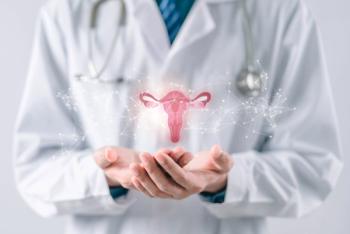
Discussing low-dose aspirin use for preeclampsia prevention
A study discussed by Tabby Khan, MD. MPH, reveals low rates of low-dose aspirin use among high-risk preeclampsia patients, highlighting the need for increased clinician awareness and better insurance coverage to improve maternal and infant health outcomes.
In a recent interview with Contemporary OB/GYN, Tabby Khan, MD, MPH, senior medical director at Komodo Health, discussed the results of a study evaluating rates of low-dose aspirin use among patients at high risk of preeclampsia.
Preeclampsia is characterized by elevated protein in the urine and high blood pressure, often leading to adverse maternal and infant outcomes. These include impacts on the kidney, liver, and brain.
Multiple organizations including the World Health organization recommend low-dose aspirin for the prevention of preeclampsia, leading researchers to evaluate the prevalence of low-dose aspirin prescriptions. The findings were based on Komodo Health’s health care map, the largest view of patient journeys through the health care system.
Of patients, 10% were considered at high-risk of preeclampsia, and a low-dose aspirin prescription was reported in only 11% of these individuals. Notably, this data was based on insurance claims, but women will often be told to receive over-the-counter low-dose aspirin at their local pharmacy, meaning this data is likely undercaptured.
Khan highlighted the importance of clinician awareness about low-dose aspirin prescription. Access to proper care is an important topic, especially among pregnant patients who need optimal prenatal care to optimize maternal and infant outcomes. Therefore, increased coverage from insurances may be needed to reduce the need for over-the-counter aspirin.
A major focus of initiatives is to amplify awareness among clinicians about the benefits of low-dose aspirin. Khan believes many patients and providers are unaware about this option, indicating a need to spread awareness.
Khan was optimistic about an observed increase in formal low-dose aspirin prescriptions over time. Among high-risk patients, the rate of low-dose aspirin prescriptions has risen by 8% between 2018 and 2023, from 6% to 14%. This indicates greater awareness, which may continue from initiatives by groups such as March of Dimes.
Additionally, Kham noted the racial disparities prevalent in maternal health. In the study, the risk of being classified as high risk for preeclampsia was increased by 49% among Black patients vs White patients. According to Khan, Black patients must be told about this risk and be offered treatments such as low-dose aspirin.
Khan recommended clinicians listen to their patients, even when they are not told about their patients’ medical histories in a way that they are expecting. According to Khan, every pregnant patient should know about the risk of preeclampsia, not just those who are deemed high risk.
Newsletter
Get the latest clinical updates, case studies, and expert commentary in obstetric and gynecologic care. Sign up now to stay informed.









